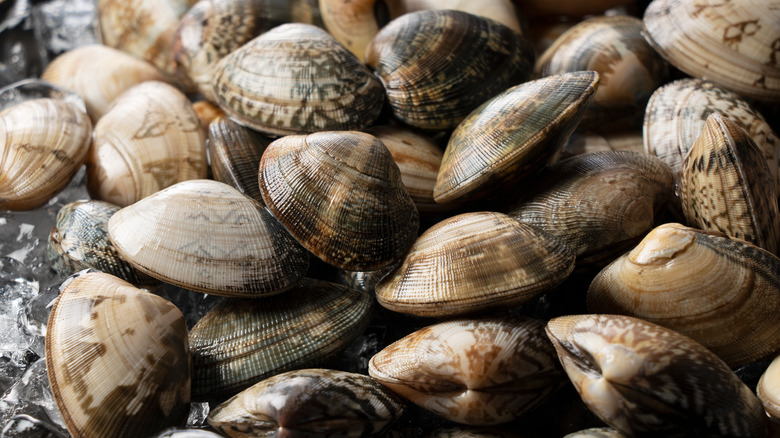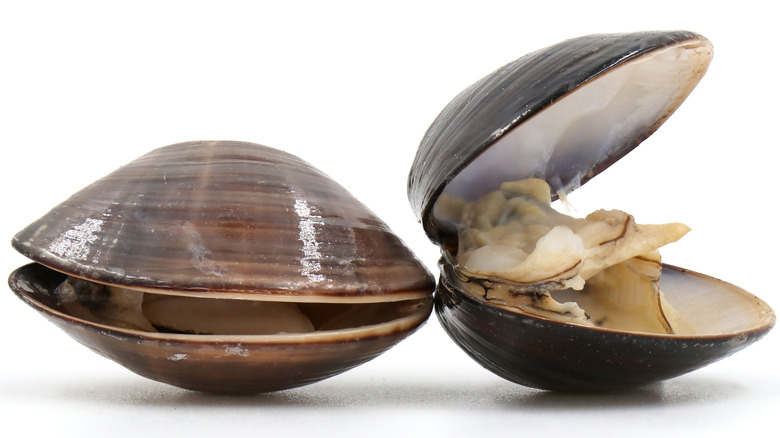The Most Important Visual Check When Shopping For Clams
As the old saying goes, we eat with our eyes first. This phrase can often refer to the ways that a particular dish can be presented on the plate to better stimulate a diner's appetite. But visual cues play a larger role in cooking than simply transforming food from just fine into fine dining.
Oftentimes, appearance can serve as an excellent indication of when your food has spoiled or gone bad. Both leafy greens and broccoli start to yellow and turn slimy when they're past their primes, and your browning fruit, with the exception of the bananas, has likely started to rot. Cookist explains that examining the texture and color of meat can help give you a gauge of its freshness. Red meat, for example, can take on a grayish hue when it's started to rot. Fresh fish should have shiny scales and unclouded eyes. Another type of seafood, clams, also has a way for a potential buyer to ascertain their freshness before buying.
Does an open shell equal a dead clam?
A clam that has surpassed its date of optimal freshness will begin to take on a fishy odor, but that isn't the most important cue when determining the freshness of your mollusk haul. Instead, you should be on the lookout for any imperfections in the clam shells. If the two halves of its shell have opened on their own, or if its shell has been broken in any way, that could mean that a clam has died, making it unsafe to consume.
A shellfish safety public service announcement published by The British Columbia Center for Disease Control tells us that you can test the viability of an open clam by tapping on its shell. If the clam is still living, it will quickly close up in response. The BCCDC also notes that clams can contain Hepatitis A and Norovirus if the mollusk comes into contact with sewage-contaminated water. As such, rolling the dice on an open clam is quite a risky decision.
How to keep clams clean
The fresher the clam, the better, which means that you will sometimes need to contend with nature itself if you want to crack one open. After you've examined your haul for open and cracked shells, the next thing you might notice is a film of muck and sand on your clams. You can rid your clam of this unpleasant coating with a thorough scrubbing, as well as a brief soak in cold water, which will allow your clams to self-filter out the sand. However, Edible Jersey advises against soaking your clams, as a water bath will eventually kill them.
You shouldn't stop visually checking in on your clams after you leave the supermarket. In fact, even after you've finished cooking your linguine and clams, another inspection is in order. Clams should open when they're cooked. If a clam stays closed after its time spent steaming in the pot, it could have already been dead before cooking.
Fortunately, you can generally abide by a similar set of rules when handling certain other species of shellfish — while mussels and clams are different, a popped open mussel shell is still a doneness indicator.


